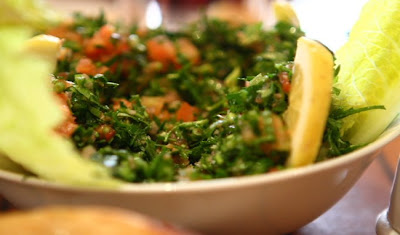Cafe crush: My local!
Saigon is crammed full of cafes in every shape and form – from the shiny and new chain variety to funky, quirky hideaways – but for an excellent cafe sua da I can’t go past my local coffee shop. A little home away from home for me, the cafe ’round the corner is of the variety typically found all over Vietnam. Rows of plastic seats akin to beach chairs line the pavement, all facing out to the street (just like Paris! Sort of….). Coffee is served on little foldout card tables, and is always accompanied by complimentary iced jasmine tea, which the owner continuously refills.
Chic Stays: Ancient House, Hoi An
Stay for: the refreshingly unmanicured grounds with an abundance of tropical flowers and foliage, the comfortable rooms, the pool and the Ancient House itself. And the Vietnamese food in the restaurant (like the bo la lot – beef wrapped in leaves and grilled, yum!).
New look A Girl in Asia
A Girl in Asia has had a little cosmetic work done – in the form of a new blog header. Once upon a time I thought my black and white bird image best reflected my blog and what it was all about (a curious little bird seeking out new finds). I guess it still does, but as it turns out the image I used (adapted from a free WordPress theme called bluebird) was not so original – also used, it seems, by Twitter!! So a facelift has been long overdue. The lantern image (which is just like my blog – a little bit Asian, a little bit girly!) comes courtesy of an illustrator named Karin Knowlton who has graciously allowed me to use her design (a big thank you!). You can see more of her illustrations on her Flickr page, and she’s soon opening an Etsy store.
Saigon Eats: Byblos
Warda has been carrying Saigon’s middle eastern food torch for a while now (ignoring the dodgy looking kebab vendors in Pham Ngu Lao) so new Lebanese restaurant Byblos is a refreshing arrival. I love Lebanese food (I lived around the corner from a Lebanese sweet shop in Sydney and miss it alot!) so happily I can now get my fix here.
Halong Bay: the good, the bad and the slightly unsightly (ok, ugly!)
We recently went on an overnight boat trip on beautiful Halong Bay with some visiting family. To most people, Halong Bay needs no introduction. If you haven’t seen the iconic images of Halong Bay’s limestone peaks jutting out of jade green sea, then you may have seen similar scenes depicted of Guilin in China. It really does look like it does in the pictures, but on a much grander, ‘need to see it to believe it’ scale.
It was great to return after our first foray to the bay on our Vietnam trip around six years ago. Then, we were on a boat with a random selection of backpackers and expats (the Australian pilot on a break from his Hong Kong base and the French couple living it up in Singapore who we met on that trip definitely helped fuel my expat-in-Asia desires!). This time around, we hired a boat to ourselves, which was not only more relaxing for us, but essential to prevent annoying other people given we had a baby on board!
We cruised past floating fishing villages….
…had a brief stop at the ‘Surprising Cave’ – as did every other boat it seems…the boats and tour companies are quite strictly controlled so there’s not much boating off the beaten path. Cave stop aside, you feel suitably spaced from other boats when cruising along (the photo below is the worst it got).
Life’s day to day essentials are all bought, sold and delivered by boat in Halong Bay. Here, a 24 hour supply of water (for cooking and washing) is delivered to our boat…
There are also floating vendors, as per the Mekong Delta’s waterways – mostly specialising in local junk food!
One of my favourite parts of the trip was transferring to a small rowboat to visit a hidden lagoon, which we entered via a small cave/tunnel…
Once inside, we rowed around a tranquil waterway surrounded by sheer rock walls and lush vegetation. It had a real undiscovered feel, despite the fact it’s on all the boat tour itineraries. We were lucky it wasn’t too busy…
And what has to be the most random sighting of the whole trip – an enormous cruise ship that seemed to emerge out of the mist early in the morning, looking totally out of place in a bay populated solely by traditional looking wooden junks.
Hopefully this isn’t the future of tourism on Halong Bay. It would be nice if the cruise passengers could transfer to junks before cruising the bay, leaving the unsightly mega-boat moored elsewhere!
Everything tastes better that ends in ‘tini

Lately I’ve found that all the best drinks on Saigon’s menus are some variation of the martini. Favourites (so far) include:
Top 5: Tips for tailor trips in Hoi An
Hoi An is Vietnam’s mecca for tailor-made clothes (in addition to its great mix of architecture and quaint – though touristy – streets). Despite all pretensions of heading to Hoi An for its history and culture, few leave without getting some clothes made at one of the many tailor shops – and it can actually be a really fun thing to do.


